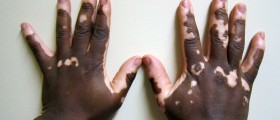
Postinflammatory hyperpigmentation is a frequent problem in many patients and is usually caused by therapeutic interventions and cutaneous disorders. The pigment excess is also usually associated with certain previous diseases and disorders that may affect the skin. These conditions include inflammatory diseases, traumas, medication reactions, allergic reactions, phototoxic eruptions, infections and mechanical injuries. Hyperpigmentation is in its most severe form in patients who have a disrupted basal layer of the cells, this condition is known as lichenoid dermatose.
Hyperpigmentation is triggered by the epidermal response to inflammation and the subsequent oxidation and release of arachidonic acids to leukotrienes and prostaglandins. These substances stimulate the synthesis of melanin in epidermal melanocytes and increase the pigment transfer to kerationcytes that surround the melanocytes. Dermal melanosis is triggered by the disruption of the basal cell layer which leads to melanin being trapped in the papillary dermis. This condition is known as pigmentary incontinence. Postinflammatory hyperpigmenation is common, universal skin response to inflammations but it usually develops more commonly in people who have darker skin.
The treatment for this condition is a long and difficult process and it can take up to a year until a person achieves the desired results. Most types of treatment are effective when it comes to improvement of the epidermal hypermelanosis but unfortunately there is no effective treatment for dermal hypermelanosis.
Various topical agents can be used for the treatment of epidermal hyperpigmentation and they all utilize the same approach of lightening of hyperpigmented area. The most commonly used agents are tretinoin cream, glycolic acid, hydroquinone, azelaic acid and corticosteroids. These can be combined with various sunscreens, chemical peels and topical gels in order to achieve even better results. Topical tretinoin can be combined with hydroquinone and GA feels in order to provide a very efficient treatment for the person with darker skin complexity. Various therapeutic agents can be combined and applied topically as they are very beneficial, especially when used on the face.
Azelaic acid can also be applied topically in order to treat postinflammatory hyperpigmenation, especially acne vulgaris which can sometimes occur with hyperpigmentation. Cryotherapy and tricholoracetic acid can be combined into another efficient treatment approach. People with darker skin should avoid this type of therapy. Pigmented makeup creams can be used in order to give the affected skin area a hue that is similar to the surrounding areas. Laser treatment is also available for certain cases of postinflammatory hyperpigmentation.

















Your thoughts on this
Loading...